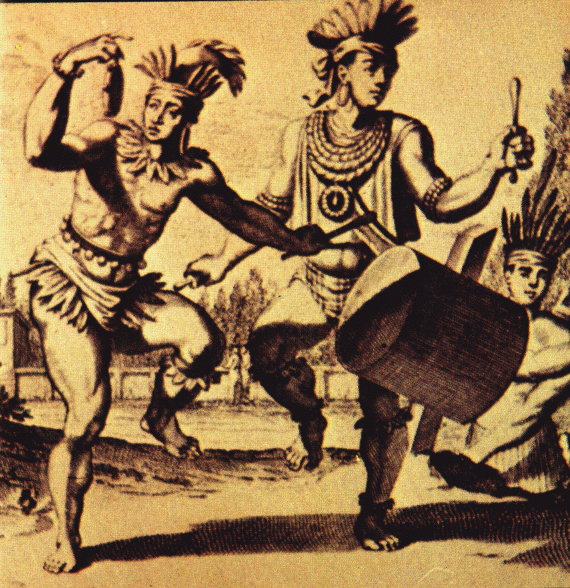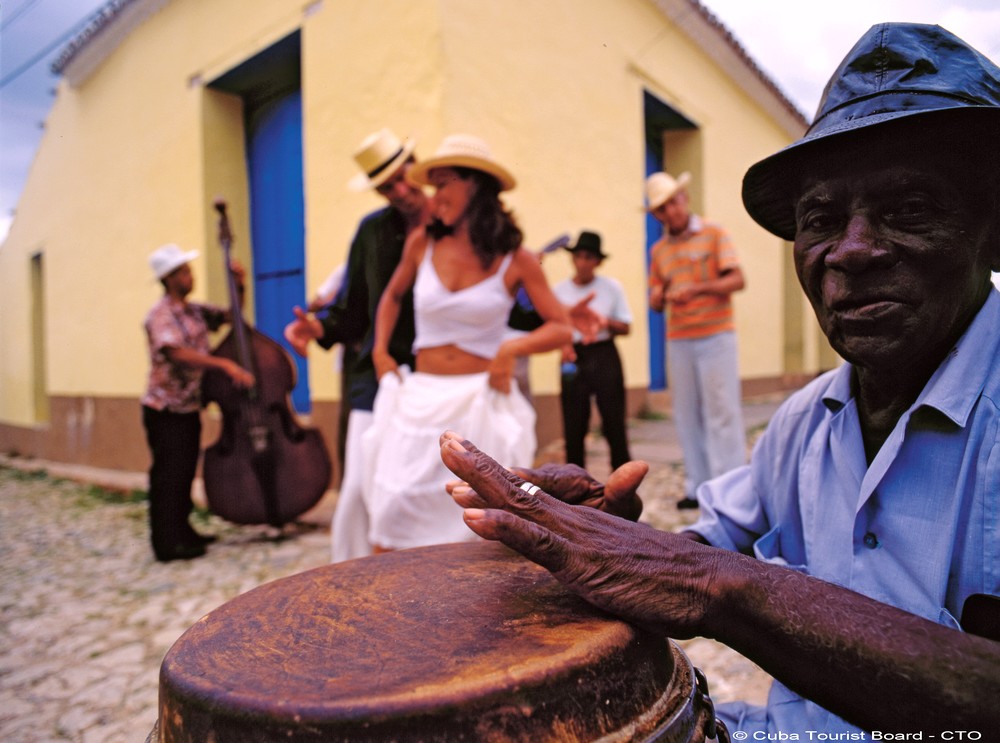The Passionate History Of Dance In Cuba
The Passionate History Of Dance In Cuba
History of dance in Cuban explains why Cubans are so passionate about dancing.

The Cuban culture is characterized by passion and there is a palpable emotion that one can feel when in the presences of the Cuban people especially when they are dancing. It's a sensation that cannot accurately be conveyed in words as dance to Cubans is tantamount to life. Everyone participates from los abuelos to los ninos, and it seems to be as second nature as breathing.
 Dance seems to have always been a part of Cuba, however there are a handful of key moments in the nations history that have greatly influence dance in the country.
Dance seems to have always been a part of Cuba, however there are a handful of key moments in the nations history that have greatly influence dance in the country.
Dancing began in Cuban even before the arrival of slaves and colonizers in the 17th century. The indigenous people known as Tainos performed rituals and ceremonies that included dancing, singing, music and the sort.
After West African people were brought over as slaves in the 17th century, they began to have a heavy influence on the native culture and rituals in Cuba, such as the Santeria. This merging of cultures laid the foundation for Cuban culture as we know it today.
The next influential moment following the introduction of slaves into the Cuba, came in 1791 with the start of the Haitian Revolution. The Revolution spanned from 1791 until 1804 and during that period many Haitian refugees fled to Cuba and never returned, making Cuba their new home. With them they brought dances that were reflective of their story of revolution and rebellion, these dance are known today in Cuba as Tumba.
European influences caught on around the mind 19th century as the French brought with the a style of dancing known as contredanse. Rich Europeans living in this area of the world would dance this rather stoic dance at galas and affluent gatherings. The African servants would try and mimic this dance and in doing so created a much more sensual version known today as the Cuban contradanza.
area of the world would dance this rather stoic dance at galas and affluent gatherings. The African servants would try and mimic this dance and in doing so created a much more sensual version known today as the Cuban contradanza.
The early 20th century was revolutionary in Cuba for many reasons. In regards to dance we saw the invention of the Mambo my Cuban composer Arsenio Rodriquez in the 1930s. This dance took the nation by storm and quickly spread to its neighbors to the north and eventually expanded the world over. The Mambo is just as popular today as it was back then and is forever considered a part of Cuba's identity.It is said that the cha-cha was created out of necessity because the Americans visiting Cuba couldn't keep up with the Mambo rhythm thus the band conducted music based off the steps of the American dancers and thus the cha-cha was born.
Cuba is an incredible place with a controversial and sad story. It's a place rich in history, culture, and evolution. And no matter what the Cuban people may face one thing is for certain, they will most likely never stop dancing no matter what troubles may be.
Don't miss breaking news, feature stories, event updates, and more. Sign up for the FloDance mailing list today.
 Dance seems to have always been a part of Cuba, however there are a handful of key moments in the nations history that have greatly influence dance in the country.
Dance seems to have always been a part of Cuba, however there are a handful of key moments in the nations history that have greatly influence dance in the country.Dancing began in Cuban even before the arrival of slaves and colonizers in the 17th century. The indigenous people known as Tainos performed rituals and ceremonies that included dancing, singing, music and the sort.
After West African people were brought over as slaves in the 17th century, they began to have a heavy influence on the native culture and rituals in Cuba, such as the Santeria. This merging of cultures laid the foundation for Cuban culture as we know it today.
The next influential moment following the introduction of slaves into the Cuba, came in 1791 with the start of the Haitian Revolution. The Revolution spanned from 1791 until 1804 and during that period many Haitian refugees fled to Cuba and never returned, making Cuba their new home. With them they brought dances that were reflective of their story of revolution and rebellion, these dance are known today in Cuba as Tumba.
European influences caught on around the mind 19th century as the French brought with the a style of dancing known as contredanse. Rich Europeans living in this
 area of the world would dance this rather stoic dance at galas and affluent gatherings. The African servants would try and mimic this dance and in doing so created a much more sensual version known today as the Cuban contradanza.
area of the world would dance this rather stoic dance at galas and affluent gatherings. The African servants would try and mimic this dance and in doing so created a much more sensual version known today as the Cuban contradanza.The early 20th century was revolutionary in Cuba for many reasons. In regards to dance we saw the invention of the Mambo my Cuban composer Arsenio Rodriquez in the 1930s. This dance took the nation by storm and quickly spread to its neighbors to the north and eventually expanded the world over. The Mambo is just as popular today as it was back then and is forever considered a part of Cuba's identity.It is said that the cha-cha was created out of necessity because the Americans visiting Cuba couldn't keep up with the Mambo rhythm thus the band conducted music based off the steps of the American dancers and thus the cha-cha was born.
Cuba is an incredible place with a controversial and sad story. It's a place rich in history, culture, and evolution. And no matter what the Cuban people may face one thing is for certain, they will most likely never stop dancing no matter what troubles may be.
FloDance's best content, delivered to your inbox
Don't miss breaking news, feature stories, event updates, and more. Sign up for the FloDance mailing list today.